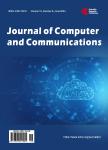Single Image Dehazing: An Analysis on Generative Adversarial Network
Single Image Dehazing: An Analysis on Generative Adversarial Network作者机构:Department of Computer Science and Engineering Daffodil International University Dhaka Bangladesh.
出 版 物:《Journal of Computer and Communications》 (电脑和通信(英文))
年 卷 期:2020年第8卷第4期
页 面:127-137页
学科分类:080903[工学-微电子学与固体电子学] 0809[工学-电子科学与技术(可授工学、理学学位)] 08[工学] 080501[工学-材料物理与化学] 0805[工学-材料科学与工程(可授工学、理学学位)] 080502[工学-材料学]
主 题:Dehazing Deep Leaning Convulutional Neural Network (CNN) Generative Adversarial Networks (GAN)
摘 要:Haze is a very common phenomenon that degrades or reduces visibility. It causes various problems where high-quality images are required such as traffic and security monitoring. So haze removal from scenes is an immediate demand for clear vision. Recently, in addition to the conventional dehazing mechanisms, different types of deep generative adversarial networks (GAN) are applied to suppress the noise and improve the dehazing performance. But it is unclear how these algorithms would perform on hazy images acquired “in the wild and how we could gauge the progress in the field. To bridge this gap, this presents a comprehensive study on three single image dehazing state-of-the-art GAN models, such as AOD-Net, cGAN, and DHSGAN. We have experimented using benchmark dataset consisting of both synthetic and real-world hazy images. The obtained results are evaluated both quantitatively and qualitatively. Among these techniques, the DHSGAN gives the best performance.



